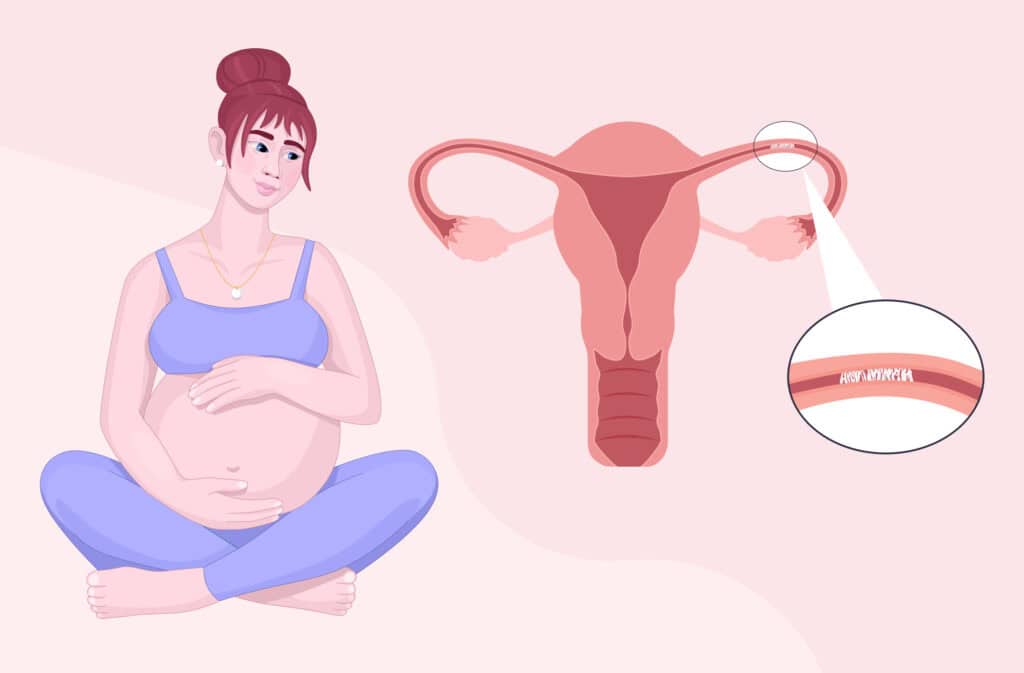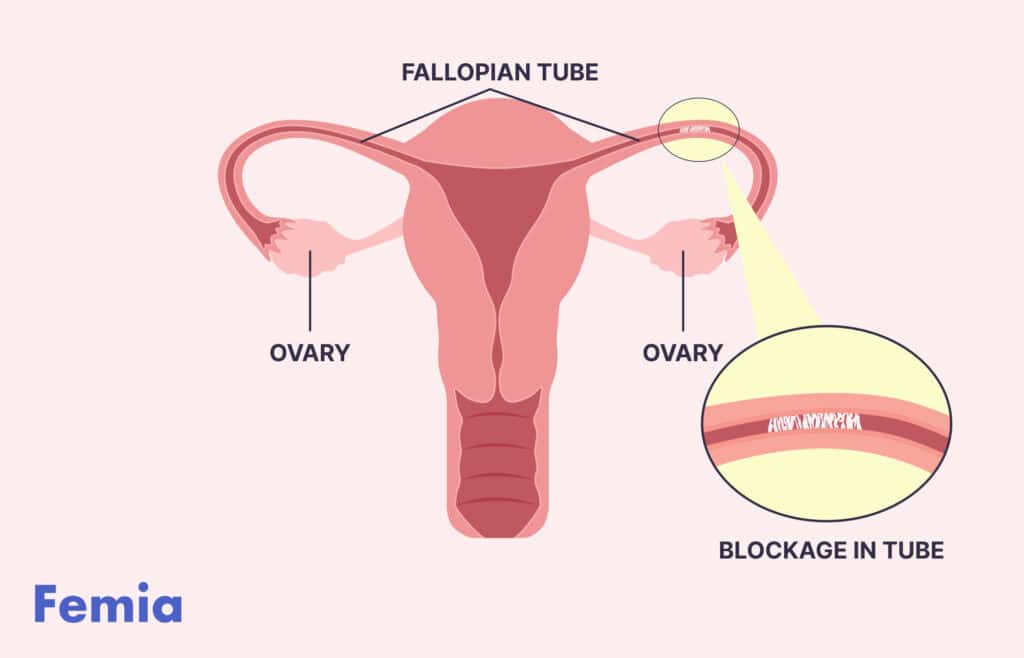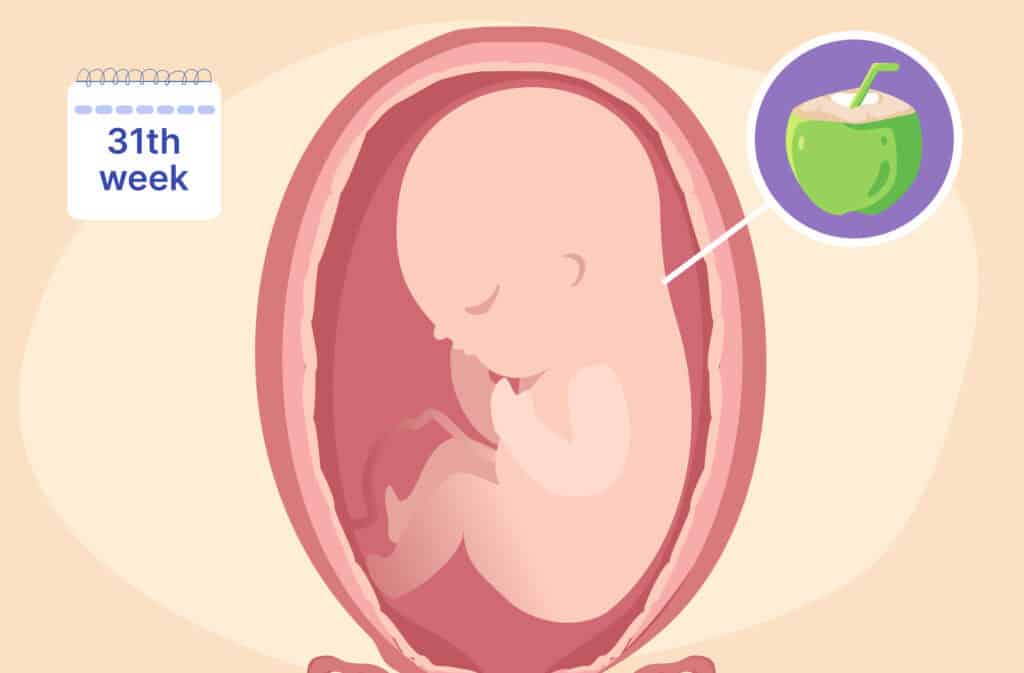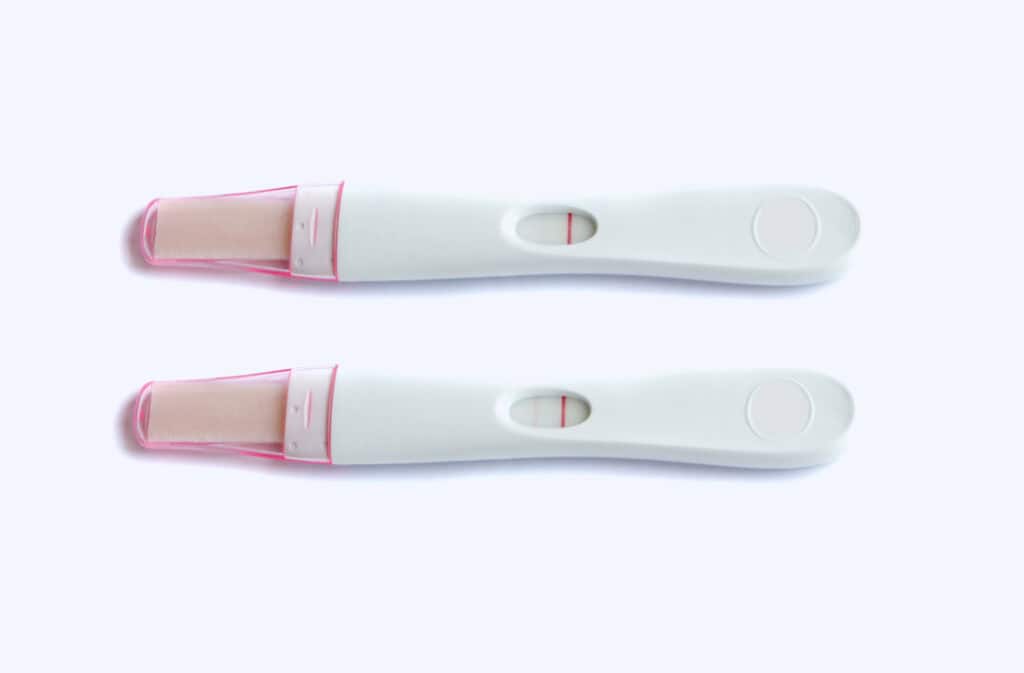Femia > Health Library > Getting Pregnant > Challenges > 7 steps to getting pregnant with blocked fallopian tubes
7 steps to getting pregnant with blocked fallopian tubes

- Updated Feb 11, 2025
- Published
CRAFTED BY HUMAN
Crafted by human At Femia, we provide accurate and up-to-date information at every stage of your journey, from trying to conceive, pregnancy and postnatal support. All content is created by a real person based on in-depth research and own professional experience. Femia ensures that you will receive expert advice, strict accuracy and a personalized approach from our authors/medical experts. Learn more about our editorial policy.
FACT CHECKED
Fact checked At Femia Health, we maintain the highest standards of editorial excellence in delivering content focused on helping you conceive, guiding you through pregnancy, and supporting you postpartum. Explore our content review principles to learn how we ensure the accuracy and quality of our health and lifestyle tips for every stage of your journey.
- Getting pregnant with blocked fallopian tubes is possible. Start by consulting a fertility specialist for a proper diagnosis and personalized treatment plan.
- Options may include tubal surgery, IVF, or lifestyle changes.
While many couples choose to keep their struggles a secret, experts believe that at least 10-15% of couples struggle with infertility. Recent studies show that roughly 30% of women experience infertility due to issues or irregularities with their fallopian tubes. The fallopian tubes are central to the egg and sperm uniting, and proper fallopian tube health is essential for conception to happen naturally.
As you probably know, natural conception isn’t the only path to pregnancy. Thanks to modern medicine, women with blocked fallopian tubes have a variety of options, including medical treatments and assisted reproductive technologies. Discussing different options with a trusted healthcare professional or fertility specialist is a crucial step in determining the approach best suited for you and your unique circumstances.
If you’ve been wondering how to get pregnant with blocked fallopian tubes, you’ve come to the right place. Together, we’ll take a deep dive into this condition while presenting to you the 7 steps to getting pregnant with blocked fallopian tubes.
Femia helped 35,000+ couples to optimize their fertility
Step 1: Understand what blocked fallopian tubes mean
If you have recently learned that you have a blocked fallopian tube, or you suspect that might be the case, it is important to understand what fallopian tubes are, how they function, and the role they play in your fertility.
Fallopian tubes are muscular tubes that connect the ovaries to the uterus. After the egg is released from the ovary during ovulation, it travels down to the widened part (also known as the ampulla) of the fallopian tube, where it can be fertilized. If the union of sperm and egg is formed, it reaches the uterus and becomes implanted in its walls.

There are many reasons why fallopian tubes become blocked: sexually transmitted infections, pelvic infections that cause the tissues to grow together, injuries after previous surgeries or contraceptive procedures, and inflammatory diseases of the uterus like endometriosis. Some women are even born with blocked fallopian tubes, which has led scientists to believe that genetics play large contributing factors.
How can you tell if something is wrong? Although the only way to know for sure is by getting a medical exam, there are some symptoms of blocked fallopian tubes.
- Difficulty getting pregnant. If you have been trying to conceive without success, it is recommended to get a fertility evaluation and assessment of your fallopian tubes.
- Pain. Whether it is chronic pelvic pain, severe menstrual cramps, or pain during intercourse – these are known to be blocked fallopian tube symptoms.
- Ectopic pregnancies. An ectopic pregnancy happens when a fertilized egg implants somewhere outside the uterus. Outside of the uterus, the most common place that a fertilized egg can implant abnormally is in the fallopian tube. This is a serious condition that requires immediate attention and can manifest as vaginal bleeding, sharp pelvic pain, or dizziness if there is rupture of the fallopian tube. Blocked fallopian tubes can cause ectopic pregnancies because the fertilized egg becomes trapped and is unable to reach the uterus.
👉Find out more: When you feel ovulation pain is it too late? Timing, conception, and what it means for pregnancy
@femia.fertility This set of three tips can be highly effective if consistently followed. Femia is here to help you and guide you through your fertility journey, from planning conception to welcoming your little one into the world. #ttc #ttccommunity #ttctips #fertilityawareness #fertilityjourney #fertilityadvice #fertilewindow #ovulation #wanttogetpregnant ♬ original sound - Femia fertility tracker
Step 2: Get a proper diagnosis
If you are having trouble getting pregnant, suspect that you have a blocked fallopian tube, or are experiencing symptoms related to reproductive health, it is important to talk with a trusted healthcare provider for a proper diagnosis and treatment plan.
The only way to tell if one or both of your fallopian tubes are blocked is through medical testing. There are three main tests used to diagnose blocked fallopian tubes:
- Hysterosalpingogram or HSG. This is an X-ray test in which a harmless dye is injected into your womb to better visualize the tubes. If the fluid does not flow into the fallopian tubes, they might be blocked.
- Sonohyterogram. This is an ultrasound test very similar to HSG that uses sound ways to create a picture of the tubes.
- Ultrasound. This imaging technique is usually the first step in evaluating the pelvis after a history and physical exam. During an ultrasound, sound waves are used to create images of the internal organs. While it doesn’t directly visualize the fallopian tubes unless they are obviously abnormal, it can detect abnormalities in the ovaries and uterus. This non-invasive test can identify conditions that may affect fertility, such as hydrosalpinx or tubo-ovarian abscess.
If you receive a diagnosis for a blocked fallopian tube, the general recommendation is to follow up with a fertility specialist or a gynecologist consultation. They can help you identify any underlying issues contributing to the blockage and propose the best course of action toward achieving a successful pregnancy.
👉Find out more: Pelvic floor massage 101: How to relieve pain and improve function
Step 3: Explore medical treatment options
So you found out that fallopian tube issues are keeping you from getting pregnant – but how do you unblock fallopian tubes?
While surgery for blocked fallopian tubes is possible, it’s not very common nowadays. Your doctor will likely discuss different options with you, like IVF, which many couples choose instead of surgery.
When deciding what’s best for you, think about things like success rates, costs, and your personal health situation. Remember, your doctor is there to help you understand these choices and find the best path forward for your family plans.
Let’s break down the options for treatment, including surgical and non-surgical medical procedures.
The type of intervention depends on where and how much your fallopian tube is blocked. Most of these procedures involve microsurgical techniques and can be done through laparoscopy or open surgery.
- Selective tubal cannulation. This is a gentle way to try to unblock your tubes from the inside. The doctor uses a tiny tube or needle to clear the blockage. It’s not surgery, so doctors often suggest trying this first.
- Tubal flushing. This non-surgical procedure involves flushing the fallopian tube with a fluid. It is used both as a diagnostic tool and as a treatment. According to a study published in The New England Journal of Medicine, using oil-based fluids yields better results than using water-based fluids.
- Salpingectomy. Sometimes, before trying IVF, doctors might remove a part of the tube that’s blocked by fluid. It might sound scary, but it can actually improve your chances of getting pregnant with IVF.
- Salpingostomy. If the end of your tube is blocked, the doctor can create a new opening closer to your ovary.
- Tubal reanastomosis. This is a surgery to undo a tubal ligation (a type of permanent birth control) or to fix a damaged tube. In this procedure, the doctor removes the blocked part of the tube and then joins the healthy ends back together. It’s worth knowing that tubal ligations can be done in different ways – sometimes with clips, sometimes by using heat to close the tubes, or even by removing a small piece of the tube. Your doctor can explain which method was used for you if you’re considering this reversal.
- Fimbrioplasty. If a part of the tube closest to the ovary is partially blocked or has scar tissue, this procedure can rebuild the fringed ends of the fallopian tube.
👉Find out more: Thinking about conception? Genetic testing before pregnancy explained
Step 4: Consider assisted reproductive technologies (ART)
If your fallopian tubes are blocked, you may want to undergo a procedure or surgery on your tubes. But you also have the option to try an assisted reproductive technology like IVF. There is much debate about what is the best course of action – you and your healthcare provider can decide on the right choice for you.
Assisted reproductive technology involves all fertility treatments in which both the egg and sperm are managed. The most common type is IVF, which involves combining the sperm and egg in a laboratory and then transferring the embryo to the uterus.
According to the 2018 report by the Society for Assisted Reproductive Technology, women under 35 years of age achieve live births using IVF in 47.6% of attempts. For those between 35 and 37 years, the success rates drop to 30.7% and women between 38 and 40 years of age have a success rate of 21.7%.
As IVF is done in cycles, the success rates increase with each try. Many other factors affect IVF outcomes, including sperm quality, embryo quality, and thickness of the uterus wall.
Step 5: Adopt a healthy lifestyle
Sometimes when we face medical issues, we can feel like we don’t have control over what our bodies are doing. This step offers you a huge opportunity to improve your fertility and increase your chances of getting pregnant with a blocked fallopian tube by changing your behavior and lifestyle habits. According to a literature review, poor lifestyle choices such as eating a fat-rich diet, smoking, drinking alcohol, using drugs, and reckless sexual behavior can negatively impact your fertility.
Consider making the following changes to enhance your health and overall well-being:
- Eat a balanced diet. Consume nutrient-rich foods like fruits, vegetables, lean proteins, healthy fats, and whole grains. Eat foods packed with antioxidants, like berries or spinach, to protect your eggs from cellular damage. Bonus: get your partner to eat a balanced diet with you! The stronger his sperm are, the better.
- Exercise regularly. Try to become more active in your daily life and introduce a customized workout routine that feels good to you.
- Sleep well. Get enough hours of rest to allow your body to fully recover and balance hormone levels.
- Manage stress. Try relaxation techniques like meditation, yoga, or deep breathing exercises.
Step 6: Use supplements and vitamins
While a healthy diet is always important for your overall well-being, there’s no strong evidence that vitamins to unblock fallopian tubes actually exist.
Some key substances have been proven to enhance reproductive health and increase the chances of getting pregnant. Of course, talk with your healthcare provider before introducing any supplements into your diet.
- Folic acid helps with DNA synthesis and cell division.
- Iodine supports thyroid function, which can affect ovulation, menstrual cycles, and overall fertility.
- Zinc helps with cell division, immune function, and hormone regulation.
- Selenium protects against cell damage and supports thyroid function.
In addition to fertility vitamins and supplements, certain natural remedies are believed to support reproductive health and potentially improve fertility.
According to a 2015 study of women with infertility and blocked fallopian tubes, Chinese herbal medicines could potentially double pregnancy rates within 3–6 months.
Femia offers personalized tracking and expert guidance for women
Step 7: Learn from success stories
Are you eager to hear that “I got pregnant with blocked fallopian tubes” success story? While blocked fallopian tubes can pose a significant challenge, various approaches like IVF offer hope and real solutions for a successful pregnancy. Many ladies with blocked fallopian tubes have healthy, thriving babies, and you can read about their journeys online.
Some women went through multiple IVF treatments, underwent surgery, tried acupuncture and Chinese medicine interventions, tested natural remedies and lifestyle changes, used donor eggs, and combined various treatments. After one or many trials, they had full-term pregnancies and delivered healthy babies.
We hope these success stories help remind you that you are not alone! Thankfully, there are so many ways and options for you to expand your family. Modern medicine and fertility clinics are here to support you as you embark on your pregnancy journey.
Questions from Femia community
Can I still ovulate with blocked fallopian tubes?
You know that blocked fallopian tubes may prevent conception, but can you ovulate with blocked tubes? The answer is – yes. Even though the tube is blocked and the egg cannot travel to meet the sperm, the process of ovulation happens in your ovaries. The normal release of an egg each menstrual cycle that causes ovulation is not affected by the tube blockage.
What are my chances of success with IVF if I have blocked fallopian tubes?
IVF has a high success rate for women with blocked fallopian tubes, with success rates varying based on age, overall health, and other factors. On average, the success rate for IVF in women with blocked fallopian tubes is around 47.6% per cycle for those under the age of 35. Reach out to a fertility specialist to receive a more personalized estimate.
If I decide to have surgery for my blocked tubes, what risks or complications should I be aware of?
Surgical treatments for blocked fallopian tubes, such as laparoscopy or tubal cannulation, all carry certain risks. These procedures can make one become more prone to infections, bleeding, damage to surrounding organs, and the possibility of ectopic pregnancy.
Does having blocked tubes increase my odds of twins or triplets if I use IVF or other fertility treatments?
Women with blocked fallopian tubes undergoing IVF have similar chances of multiple pregnancies as those with other fertility issues. Having blocked fallopian tubes does not affect the chances of multiple pregnancies, but the process of IVF itself can increase these chances. As IVF involves hormonal stimulation of the ovaries and transferring multiple embryos to the uterus, the chances of having twins or triplets increase.
I'm not sure about IVF or surgery. What other options do I have to become pregnant with blocked fallopian tubes?
Women with blocked fallopian tubes who do not wish to undergo surgery or IVF still have options like surrogacy and adoption. However, surrogacy may not be available or legal in every country.
Surrogacy involves another woman carrying the baby – the embryo is made from your egg and your partner’s sperm (or donor eggs or sperm, if necessary). Adoption brings a child the love, support, and family they need while offering the joy of parenthood without the need for medical interventions.
The bottom line
Having a blocked fallopian tube may make your journey to pregnancy more challenging, but there is still hope with the right approach and medical guidance. After you get a diagnosis and learn about the condition, explore the available treatments, especially assisted reproductive technology like IVF. You can also do a lot on your own by changing your daily habits and using vitamins and supplements.
While navigating this journey, talk with your trusted fertility specialist and explore all available options. Remember, each person’s path to parenthood is unique, so keep nurturing your dreams and believe in the possibilities that lie ahead.
References
- Ambildhuke, Ketki, et al. “A Review of Tubal Factors Affecting Fertility and Its Management.” Cureus, vol. 14, no. 11, p. e30990. PubMed Central, https://doi.org/10.7759/cureus.30990.
- Amini, Payam, et al. “Factors Associated with In Vitro Fertilization Live Birth Outcome: A Comparison of Different Classification Methods.” International Journal of Fertility & Sterility, vol. 15, no. 2, 2021, pp. 128–34. PubMed Central, https://doi.org/10.22074/IJFS.2020.134582.
- “Blocked Fallopian Tubes: Symptoms, Causes, and Treatment.” Medical News Today, 6 Apr. 2018, https://www.medicalnewstoday.com/articles/321419.
- Choe, Jennifer, and Anthony L. Shanks. “In Vitro Fertilization.” StatPearls, StatPearls Publishing, 2024. PubMed, http://www.ncbi.nlm.nih.gov/books/NBK562266/.
- Dreyer, Kim, et al. “Oil-Based or Water-Based Contrast for Hysterosalpingography in Infertile Women.” New England Journal of Medicine, vol. 376, no. 21, May 2017, pp. 2043–52. Taylor and Francis+NEJM, https://doi.org/10.1056/NEJMoa1612337.
- Emokpae, Mathias Abiodun, and Somieye Imaobong Brown. “Effects of Lifestyle Factors on Fertility: Practical Recommendations for Modification.” Reproduction & Fertility, vol. 2, no. 1, Jan. 2021, pp. R13–26. PubMed Central, https://doi.org/10.1530/RAF-20-0046.
- “Fallopian Tube Procedures for Infertility.” HealthLink BC, https://www.healthlinkbc.ca/pregnancy-parenting/planning-your-pregnancy/fertility/fallopian-tube-procedures-infertility. Accessed 3 Aug. 2024.
- “For Everyone.” Your Fertility, https://www.yourfertility.org.au/everyone. Accessed 4 Aug. 2024.
- Ried, Karin. “Chinese Herbal Medicine for Female Infertility: An Updated Meta-Analysis.” Complementary Therapies in Medicine, vol. 23, no. 1, Feb. 2015, pp. 116–28. ScienceDirect, https://doi.org/10.1016/j.ctim.2014.12.004.
Sun, Biyun, and Zhishun Liu. “Successful Pregnancy in a Woman with Bilateral Fallopian Tube Obstruction and Diminished Ovarian Reserve Treated with Electroacupuncture.” Medicine, vol. 98, no. 38, Sept. 2019, p. e17160. PubMed Central, https://doi.org/10.1097/MD.0000000000017160.

Discover what happens at 31 weeks pregnant, from baby development and symptoms to ultrasounds and breathing techniques for labor.

Do you weigh more on your period? Discover the causes of weight gain during period, tips to manage the hormonal fluctuations, and how long the weight gain lasts.

Evaporation lines vs faint positive results on pregnancy tests, including very faint lines almost invisible. Discover 3 key differences to accurately interpret pregnancy test results.

